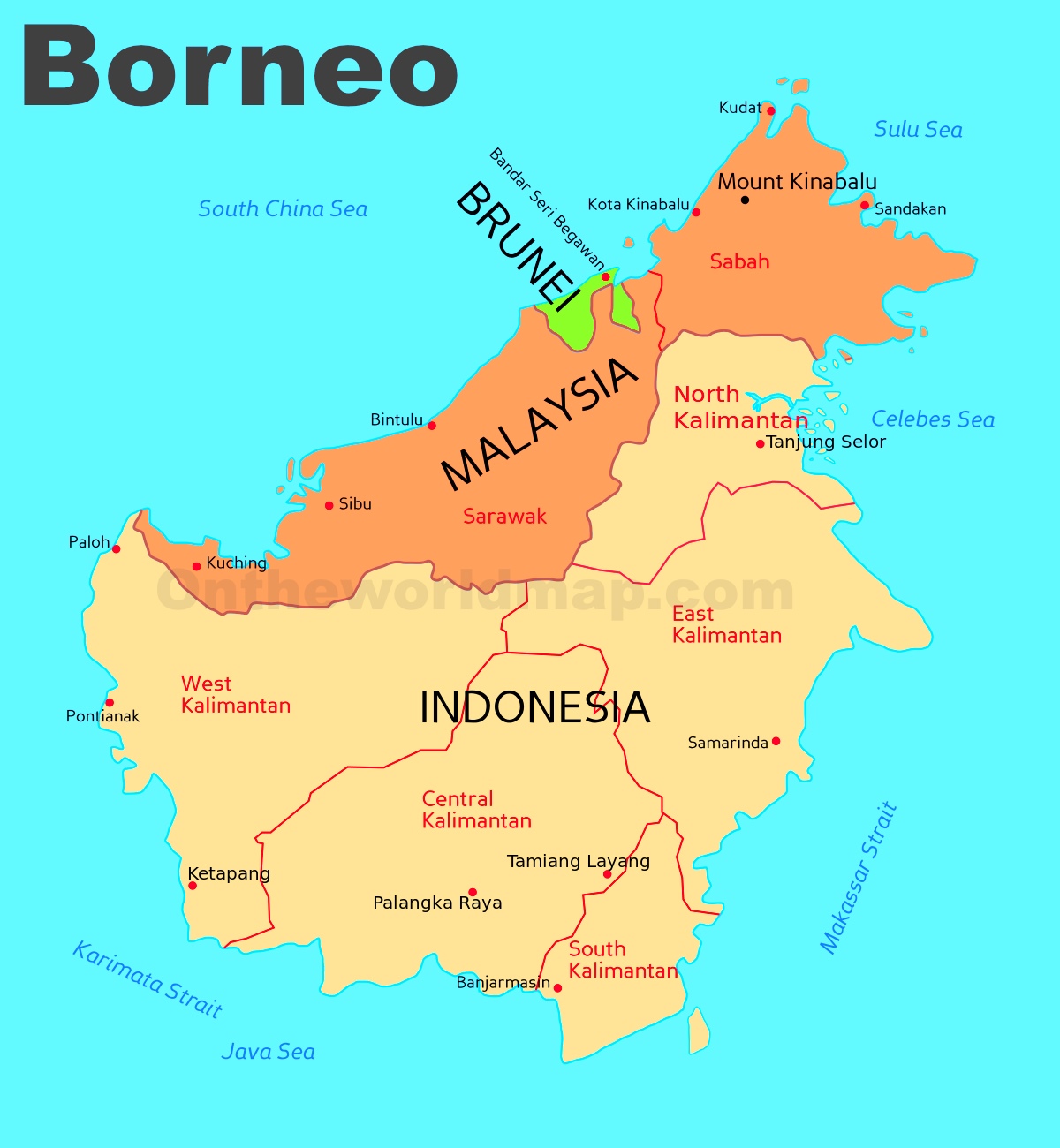Population: 21,258,000 (2014)
Area: 287,001 mi²
Antipodal to an area of Amazon rainforest, Borneo is itself home to one of the oldest rainforests in the world.
Language
Bahasa Malaysia is the official language spoken in the Sabah and Sarawak. Other widely spoken languages include Chinese (Cantonese, Mandarin, Hokkien, Hakka, Hainan, Foochow), Tamil and English. All the indigenous tribes in Borneo also speak their own language.
Currency
The beautiful island of Borneo is shared by three countries; Malaysia, Indonesia and Brunei – so the required currency in Borneo is all dependent on which part you are staying in. Both the Indonesian Rupiah and Malaysian Ringgit are available to purchase before you depart. It is handy to have local currency in Borneo, so that you do not have to waste time searching for an exchange kiosk when you arrive. In popular tourist areas ATM access is rarely a problem but may be costly depending on your bank, so having local cash on hand can save you money on ATM withdrawal fees.
Geography
Borneo is surrounded by the South China Sea to the north and northwest, the Sulu Sea to the northeast, the Celebes Sea and the Makassar Strait to the east, and the Java Sea and Karimata Strait to the south. To the west of Borneo are the Malay Peninsula and Sumatra. To the south and east are islands of Indonesia: Java and Sulawesi, respectively. To the northeast are the Philippine Islands. With an area of 743,330 square kilometres (287,000 sq mi), it is the third-largest island in the world, and is the largest island of Asia (the largest continent). Its highest point is Mount Kinabalu in Sabah, Malaysia, with an elevation of 4,095 m (13,435 ft). Before sea levels rose at the end of the last Ice Age, Borneo was part of the mainland of Asia, forming, with Java and Sumatra, the upland regions of a peninsula that extended east from present day Indochina. The South China Sea and Gulf of Thailand now submerge the former low-lying areas of the peninsula. Deeper waters separating Borneo from neighbouring Sulawesi prevented a land connection to that island, creating the divide known as Wallace's Line between Asian and Australia-New Guinea biological regions.
Kapuas River in Indonesia, at 1,000 km (620 mi) in length, it is the longest river in Borneo.
The largest river system is the Kapuas in West Kalimantan, with a length of 1,000 km (620 mi). Other major rivers include the Mahakam in East Kalimantan (920 km long (570 mi)), the Barito in South Kalimantan (900 km long (560 mi)), Rajang in Sarawak (565 km long (351 mi)) and Kinabatangan in Sabah (560 km long (350 mi)).Borneo has significant cave systems. In Sarawak, the Clearwater Cave has one of the world's longest underground rivers while Deer Cave is home to over three million bats, with guano accumulated to over 100 metres (330 ft) deep. The Gomantong Caves in Sabah has been dubbed as the "Cockroach Cave" due to the presence of millions of cockroaches inside the cave. The Gunung Mulu National Park in Sarawak and Sangkulirang-Mangkalihat Karst in East Kalimantan which particularly a karst areas contains thousands of smaller caves.
Economy
Borneo's economy depends mainly on agriculture, logging and mining, oil and gas, and ecotourism. Brunei's economy is highly dependent on the oil and gas production sector, and the country has become one of the largest oil producers in Southeast Asia. The Malaysian states of Sabah and Sarawak are both top exporters of timber. Sabah is also known as the agricultural producer of rubber, cacao, and vegetables, and for its fisheries, while both Sabah and Sarawak export liquefied natural gas (LNG) and petroleum. The Indonesian provinces of Kalimantan are mostly dependent on mining sectors despite also being involved in logging and oil and gas explorations.
Transportation
As Borneo is a large island, you should plan your transportation options ahead due to the long distances involved. While not as modern as those in Peninsular Malaysia, the transportation system in Borneo is decent enough, allowing you to rent cars, take taxis, ride buses or charter boats and ferries.
Climate














